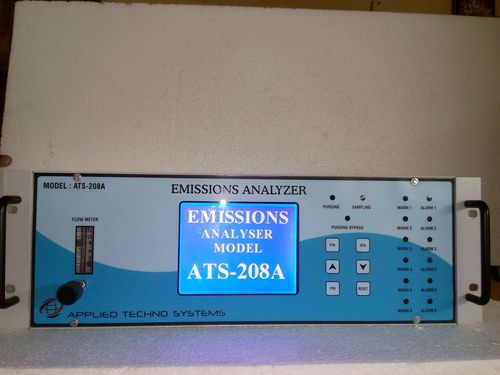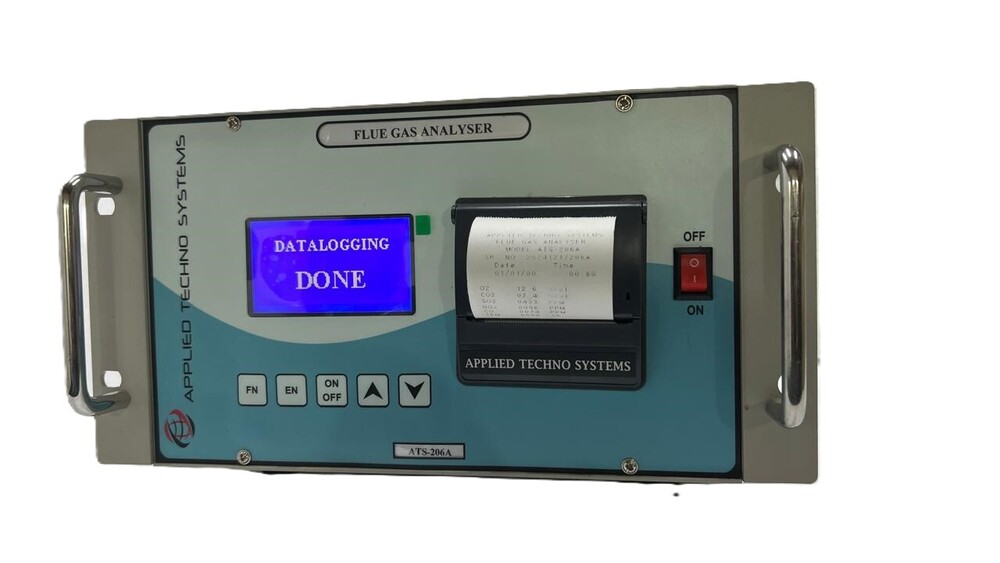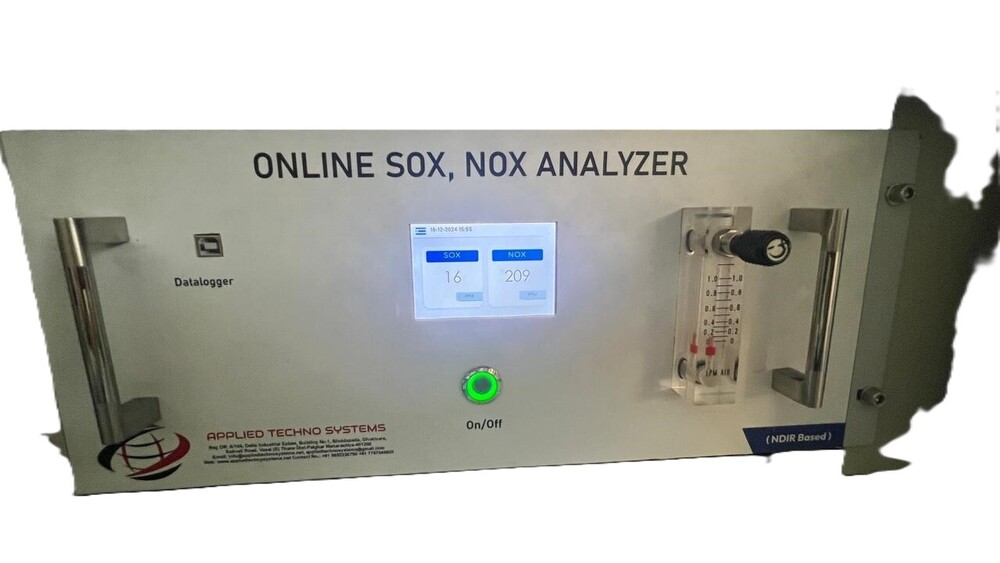- Dew Point Meters
- Gas Analysers
- Portable Gas Detector
- Moisture And Dew Point Analyzer
- Dust/Opacity Monitor
- Gas Monitoring Systems
- Gas Leak Detectors
- Gas Transmitters
- VOC Leak Detector
- Air Quality Monitoring System
- Online Continuous Emission Monitoring System-OCEMS
- Dew Point Monitors
- Gas Detector
- Opacity Monitor
- Portable Flue Gas Analyzer
- Online SOX & NOX Gas Analyzer
- Methane Gas Leak Detector
- Hydrogen Purity Analyzer
- Gas Purity Analyzer
- Effluent Monitoring Systems
- Producer Gas Analyzer
- Gas Detector Calibration Service
- Portable Gas Monitors
- Gas Sensor Transmitter
Ammonia Gas Analyzer
Price 386500 INR/ Piece
MOQ : 1 , , Piece
Ammonia Gas Analyzer Specification
- Weight
- 1.5 Kilograms (kg)
- Usage
- Industrial, Laboratory
- Material
- Aluminium
- Power Supply
- Electric
- Color
- Grey
- Temperature
- -15 Celsius (oC)
- Voltage
- 230 V Volt (v)
- Humidity
- 85%RH
Ammonia Gas Analyzer Trade Information
- Minimum Order Quantity
- 1 , , Piece
- Supply Ability
- 50 Pieces Per Week
- Delivery Time
- 1-2 Week
About Ammonia Gas Analyzer
Ammonia Gas Analyzer : Model ATS- 208A
- Ammonia Gas Analyzer continuously monitors the concentration of Ammonia in PPM and other gases ranging from 100%V/V down to PPM level. Feature includes a duel wavelength sensor, Remote Sampling, Graphics LCD Display, adjustable level relay output for alarm and 4-20mA output for control purpose and minimal maintenance.
- Special gas sample Conditioning systems are used to clean and dry the gas sample for accurate and High performance operation. An Internal Pump draw gas sample into the sensor through a dust particle filter from an intake which can be located at distance up to 40 meter form the monitor.
- The Sensor and Electronic component are housed in tough aluminium housing
Applications
- Metal heat Treatment
- Boiler Systems
- Cement & Lime Manufacturer
- Combustion Process
- Hydrogen Cooled Alternators & Turbine
- Gasification & Syngas
- Pulp & Paper
- Metal Heat Treatment Plant
- Laboratories & Institutions
- Flame Treatment Process & Chemical Industries
- Petrochemical & Pharmaceutical Industries
- Microcontroller based embedded intelligent instruments
- Continuous Monitoring of CO2 ,CH4, CO, O2, SO2, NOX (NO+NO2), H2, H2S, N2
- Duel wavelength Infra red sensor for Long terms accuracy and stability
- Long Life Electrochemical sensor
- Six Gas Analysis in Single Analyser
- Multi Parameter Single 320 X 240 Graphics LCD Display
- Self diagnostic & Self integrity check
- RS 232/RS 485 and USB Computer Interface
- Excellent low level capability for NOX and SO2 Measurement
- For most of the application sample gas is cooled and dried inside the sampling conditioning systems to avoid the Heated Sample Line.
- Analog 4-20mA output for each gas
- Software solutions for Gas Analysis
- Web Based Real time data transfer with GSM/GPRS Technology
Reliable Performance Across Conditions
Designed to operate effectively at humidity levels up to 85% RH and in environments as cold as -15C, this ammonia gas analyzer excels in demanding settings. Its aluminium construction ensures durability and longevity, making it suitable for industrial and laboratory use alike.
Streamlined for Easy Use and Maintenance
Weighing just 1.5 kg, the analyzer is portable and simple to install. Its electric power supply (230 V) provides consistent operation. Maintenance is minimal, ensuring continued performance with straightforward servicing for busy industrial and laboratory workflows.
FAQs of Ammonia Gas Analyzer:
Q: How is the Ammonia Gas Analyzer installed and set up for use in a laboratory or industrial facility?
A: Installation involves placing the lightweight 1.5 kg unit in the monitoring area, connecting it to a 230 V electrical supply, and following the included setup instructions to calibrate the analyzer for immediate operation.Q: What environments are suitable for using this ammonia analyzer?
A: This analyzer is engineered for challenging conditions, functioning reliably at temperatures as low as -15C and humidity up to 85% RH, making it suitable for both industrial and laboratory settings in Zimbabwe.Q: When should the analyzer be maintained or recalibrated?
A: Routine checks and calibration are recommended based on usage frequency and industrial standards. Typically, maintenance once every six months ensures optimal accuracy and reliable detection of ammonia gas levels.Q: Where is this analyzer commonly used?
A: It is widely utilized in laboratories, manufacturing plants, chemical processing facilities, and by exporters, importers, and service providers requiring precise ammonia gas monitoring capabilities.Q: What is the benefit of using an aluminium material for the analyzers construction?
A: Aluminium provides a robust, corrosion-resistant housing, ensuring longevity and protection of internal components, which is particularly beneficial in humid environments and industrial applications.Q: How does the analyzer contribute to workplace safety and efficiency?
A: By accurately detecting and monitoring ammonia levels, this analyzer helps prevent harmful exposure, supports regulatory compliance, and ensures a safer working environment, thereby minimizing health risks and promoting operational efficiency.
Tell us about your requirement

Price:
Quantity
Select Unit
- 50
- 100
- 200
- 250
- 500
- 1000+
Additional detail
Mobile number
Email
More Products in Gas Analysers Category
N2 Purity Analyser
Price 128000 INR / Unit
Minimum Order Quantity : 1 Unit
Usage : Instant Nitrogen Gas Purity Analysis
Power Supply : 230V AC, 50 Hz
NDIR Based Gas Analyzer
Price 198800 INR / Set
Minimum Order Quantity : 1 Set
Usage : Industrial
Power Supply : Electric
Material : Aluminium
Voltage : 230 Volt (v)
ATS Portable Stack Gas Analyzer Model ATS 206A
Price 158000 INR / Unit
Minimum Order Quantity : 1 Unit
Usage : Industrial
Material : MS
Voltage : 110215 Volt (v)
Online SO2 Analyzer
Price 550000 INR / Unit
Minimum Order Quantity : 1 Unit
Usage : Hospital
Power Supply : Electric
Material : MS

 Send Inquiry
Send Inquiry





 English
English Spanish
Spanish French
French German
German Italian
Italian Chinese (Simplified)
Chinese (Simplified) Japanese
Japanese Korean
Korean Arabic
Arabic Portuguese
Portuguese